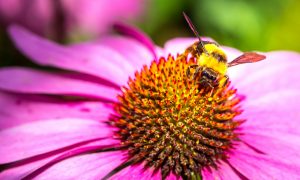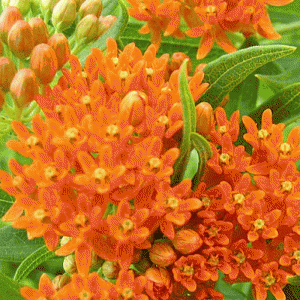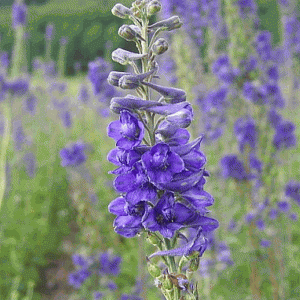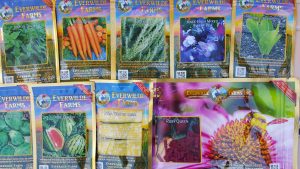Even though bright annuals are making an appearance at nurseries and grocery stores, the mainstay of many flower gardens are those hardy perennials. There’s no need to buy new ones each year, just care for the plants properly (usually simple, low-maintenance care) and they spring back each year to expand and bloom again!

Echinacea
Different types of perennials will require different care. Some perennials will be pruned back in Fall, but others need to keep their foliage to protect them over winter. Others have an attractive structure that can be left standing for interest through the bleak months, or have seed pods that birds love to eat.
So how can you tell what’s best for the perennials in your garden? Here are some tips to help you out. Evergreen perennials will still look green and healthy in March and April. If that’s the case, just leave them alone and they’ll do fine! Semi Evergreens will stay green in mild climates, but in many places, they’ll have some tattered and dead leaves that will need to be cut away in spring. Woody perennials do best if left alone until late spring. Then you’ll need to leave about 6 inches of stem intact since that’s where the new buds form. Cutting this type of perennial to the ground could kill it! Some examples are lavender, butterfly bush, fuchsia, St. John’s Wort and Russian Sage.

Butterfly Weed
Don’t wait too long to clean up your perennials! By late May you’ll have so much new growth mixed with dead plant tops, it will be a mess.
If you live in gardening zones 1 through 4, you’ll want to take this opportunity to move or divide your perennials in spring too. Many gardeners wonder when to move specific perennials, so here’s a reminder: if the plant blooms in early spring to late June, you can divide or move it in early Fall. You can still do this in early spring, but you may sacrifice a few blooms this year. If the plant blooms after late June, you can move or divide it in spring.

Delphinium
For spring care, here’s a handy list of perennials that need to be pruned and cleaned up before they can perform at their best (click on the flower name to learn more!):
- Fall-Blooming Asters – zones 4-8
- Bellflower (Campanula americana) – zones 3-8
- Black-Eyed Susan (Rudbeckia fulgida) – zones 3-9 (Birds love the seed heads, so leave them on over winter.)
- Blazing Star (Liatris spicata) – zones 4-10
- Butterfly Weed (Asclepias tuberosa) – zones 4-9 (Deadhead in the Fall if you don’t want it to re-seed, otherwise wait until spring to keep the plant healthier.)
- Cardinal Flower (Lobelia cardinalis) – zones 3-9 (Remove damaged parts, or cut back to the ground.)
- Delphinium (Delphinium exaltatum) – zones 4-7
- Flowering Spurge (Euphorbia corollata) – zones 3-9 (If you’ve had it for several years, divide in early spring.)
- Foxglove (Digitalis purpurea) – zones 2-12
- Joe Pye Weed (Eupatorium maculatum) – zones 2-7 (can be divided after several years’ growth.)
- Lavender (Lavandula angustifolia) – zones 5-12 (wait until new growth appears before removing winter die-back.)
- Lupine (Lupinus) – zones 4-6 (Lupine need their foliage for protection over winter.)
- Oriental Poppies (Papaver orientale) – zones 3-7
- Purple Coneflower (Echinacea purpurea) – zones 3-8
- Tickseed (Coreopsis) – zones 4-9
- Visit Everwilde.com

Everwilde Farms Gold Vault Packaging
Copyright 2018 Everwilde Farms

